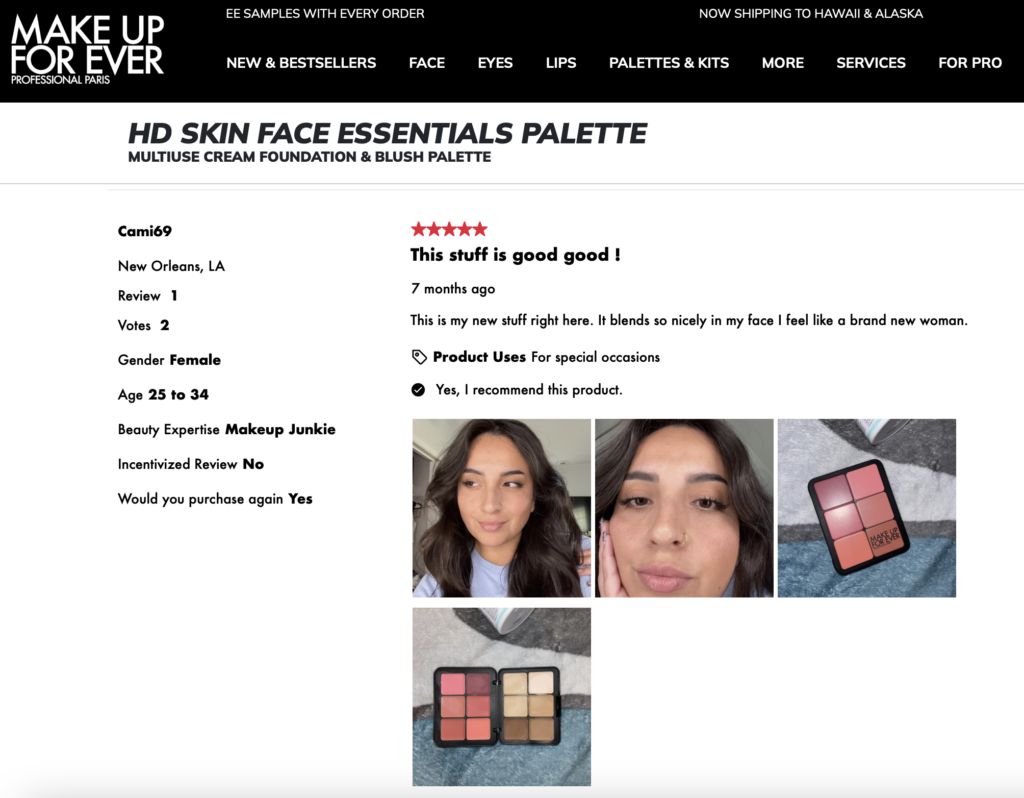As we move into the second half of 2024, the landscape for consumer reviews is more dynamic than ever. Reviews not only influence consumer trust and buying behavior but also play a crucial role in search engine optimization (SEO) and online visibility. This year presents a pivotal opportunity for businesses to harness the power of...
As we move into the second half of 2024, the landscape for consumer reviews is more dynamic than ever. Reviews not only influence consumer trust and buying behavior but also play a crucial role in search engine optimization (SEO) and online visibility. This year presents a pivotal opportunity for businesses to harness the power of reviews to enhance credibility, drive sales, and foster lasting customer relationships.
Join us as we explore effective strategies to elevate your review game and maximize its impact in the second half of 2024.
Understanding the Power of Reviews

Customer reviews play a crucial role in today’s digital landscape by fostering trust and credibility for brands. At Skeepers, we have observed up to 70.3% lift in conversion rate from consumers who read reviews displayed on product pages. When potential customers see positive reviews from others who have purchased and used a product or service, they are more likely to trust the brand and its offerings. Reviews act as social proof, reassuring new buyers about the quality and reliability of what they’re considering.
Moreover, they significantly impact a brand’s SEO efforts and online visibility. Search engines like Google prioritize websites with quality reviews, considering them as indicators of relevance and authority. Positive reviews can help improve search engine rankings, making it easier for potential customers to discover and choose your business over competitors.
Encourage Authentic Reviews
Encouraging authentic reviews is essential for building a robust review profile that potential customers trust. Here are effective strategies to prompt customers to leave genuine reviews:
- Provide Seamless Review Opportunities: Make it easy for customers to leave reviews by integrating review prompts into post-purchase emails, order confirmation pages, and within your mobile app. Ensure that the process is straightforward and doesn’t require excessive effort.
- Incentivize Responsibly: Offer incentives like discounts or loyalty points for leaving reviews, but ensure these incentives don’t compromise the authenticity of the feedback.
- Timing Is Key: Request feedback when customers are likely to have formed an opinion about your product or service. This could be shortly after delivery, installation, or after they’ve had sufficient time to use the product.
- Personalize the Request: Tailor your review request messages to reflect the customer’s experience and personalize it with their name or specific details about their purchase. This makes the request feel more genuine and relevant.
- Use Multiple Channels: Reach out to customers through various channels they use, such as email, SMS, social media, or even in-person if applicable. Each channel can serve different customer preferences and behaviors.
By employing these strategies, you can encourage customers to share their experiences authentically, contributing valuable feedback that enhances your brand’s reputation and informs potential buyers.
Leveraging Technology and Tools
Effectively managing reviews requires leveraging advanced technology and specialized tools. Here’s how you can utilize them to streamline your review management process:
- Review Management Platforms: Invest in robust platforms that help you collect and manage reviews. These platforms not only centralize your reviews but also provide analytics to understand sentiment trends, monitor ratings, and track customer feedback over time. Skeepers’ Ratings & Reviews solution allows you to effortlessly collect, manage, analyze and display your customers ratings and reviews.
- Monitoring Tools: Use monitoring tools to track mentions of your brand across the internet. These tools alert you to new reviews and comments, allowing you to respond promptly and manage your online reputation effectively.
- Response Automation: Implement automation tools that enable you to respond to reviews efficiently. Customize response templates for different scenarios while ensuring each reply is personalized and addresses customer concerns effectively.
- Sentiment Analysis: Use AI-powered sentiment analysis tools to categorize and analyze review sentiments automatically. These tools help you prioritize responses based on sentiment intensity and identify key areas for improvement.
By leveraging these technology-driven solutions, businesses can effectively manage and harness the power of customer feedback to optimize brand reputation, drive customer satisfaction, and ultimately boost sales and conversions.
Responding to Reviews
Effectively managing and responding to customers is crucial for maintaining a positive brand image and engaging with customers. Here are best practices for handling both positive and negative reviews:
- Responding to Positive Reviews:
- Acknowledge and Appreciate: Start by thanking the customer for their positive feedback. Personalize your response to show genuine appreciation.
- Highlight Specifics: Reference specific aspects of the customer’s experience mentioned in the review. This shows attentiveness and reinforces positive sentiments.
- Encourage Further Engagement: Invite the customer to continue their relationship with your brand. For example, suggest they explore other products or services you offer.
Example: “Thank you so much for your glowing review, [Customer’s Name]! We’re thrilled to hear that you enjoyed our product. Your kind words about [specific feature or experience] mean a lot to us. We look forward to serving you again soon!”
- Handling Negative Reviews:
- Prompt Response: Address negative reviews promptly to demonstrate proactive customer service.
- Apologize and Empathize: Apologize for any negative experience the customer may have had, even if the issue seems minor. Show empathy and understanding.
- Offer Solutions: Provide a solution or offer to resolve the issue offline. Encourage the customer to contact customer support for further assistance.
- Take Responsibility: Take ownership of any mistakes or shortcomings mentioned in the review. Avoid making excuses or blaming the customer.
- Stay Professional: Maintain a professional tone and avoid getting defensive, even if the review is unjustified.
Example: “We’re sorry to hear about your experience, [Customer’s Name]. Please accept our sincere apologies for the inconvenience caused. We’d like to make things right for you. Could you please reach out to our customer support team at [contact information]? We’re here to help resolve this issue.”
- Importance of Timely Responses:
- Timeliness: Respond to reviews promptly, ideally within 24-48 hours. This shows that you value customer feedback and are committed to addressing their concerns.
- Engagement: Engaging with reviews, whether positive or negative, demonstrates active participation in customer conversations. It builds trust and loyalty among your customer base.
By implementing these best practices for responding to customers, businesses can effectively manage their online reputation, enhance customer satisfaction, and foster positive relationships with their audience.
Showcase Your Reviews

Effectively showcasing customer feedback can significantly enhance your brand’s credibility and influence potential customers’ purchasing decisions. Here’s how you can leverage reviews across your platforms:
- Displaying Reviews on Your Website and Social Media:
- Testimonial Sections: Create dedicated sections on your website for customer testimonials and reviews. Showcase these prominently on your homepage or product pages.
- Aggregate Ratings: Display average ratings or star ratings for products or services. This provides a quick visual cue of customer satisfaction.
- User-Generated Content (UGC): Feature user-generated content such as customer photos, videos, or stories alongside their reviews. This adds authenticity and engages visitors.
- Social Proof Widgets: Use widgets or plugins to embed review feeds from platforms like Verified Reviews directly on your website. This shows transparency and builds trust.
- Utilizing Customer Voices in Marketing Materials:
- Incorporate in Campaigns: Integrate customer testimonials and reviews into your email campaigns, newsletters, and social media posts. Use quotes or excerpts to highlight positive feedback.
- Case Studies and Success Stories: Develop case studies or success stories based on customer experiences. Showcase these in your marketing collateral to demonstrate real-life benefits and outcomes.
Effectively showcasing reviews not only enhances your online presence but also builds credibility and trust with potential customers. By strategically integrating customer feedback into your digital marketing efforts, you can influence purchasing decisions and foster long-term customer loyalty.
Conclusion
By embracing customer feedback and integrating it into your marketing efforts, you not only enhance transparency and credibility but also foster deeper connections with your audience. Reviews serve as social proof of your brand’s value and reliability, influencing potential customers at critical decision-making stages.
As you embark on boosting your reviews in 2024 and beyond, remember that consistency, transparency, and genuine engagement are key. Embrace feedback as an opportunity for improvement and growth, and continually refine your approach to reflect customer insights. By doing so, you’ll not only enhance your brand’s reputation but also cultivate a loyal customer base that trusts and advocates for your products or services.















